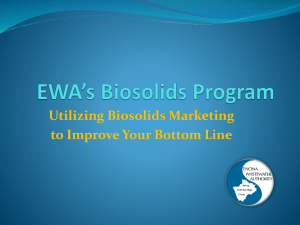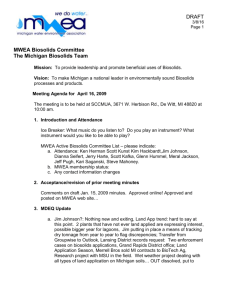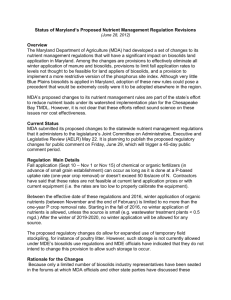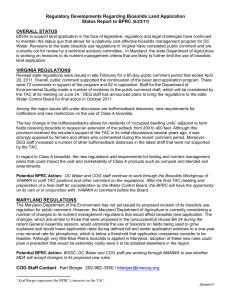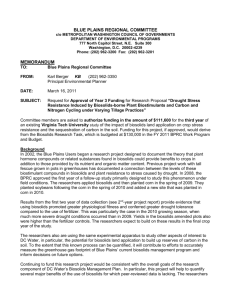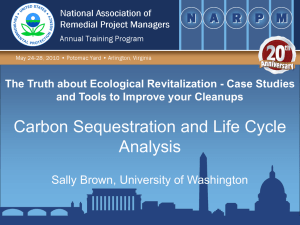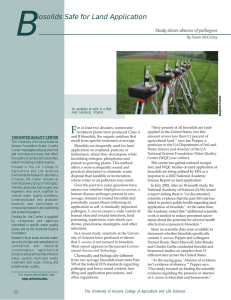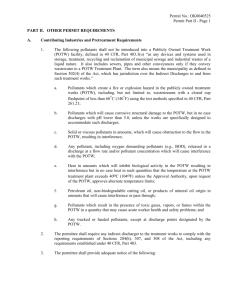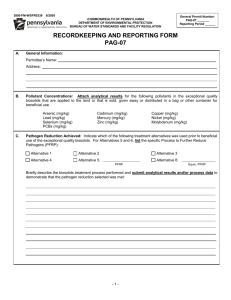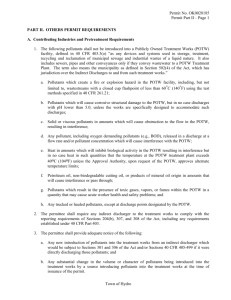FAQ Regarding Land Application of Biosolids
advertisement
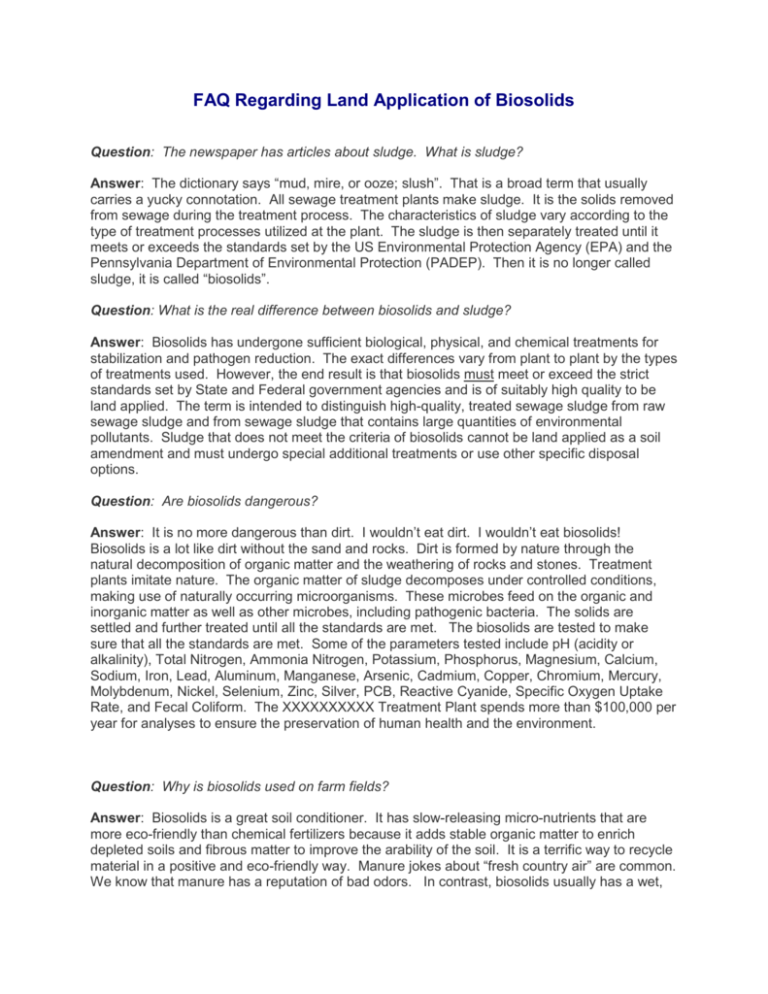
FAQ Regarding Land Application of Biosolids Question: The newspaper has articles about sludge. What is sludge? Answer: The dictionary says “mud, mire, or ooze; slush”. That is a broad term that usually carries a yucky connotation. All sewage treatment plants make sludge. It is the solids removed from sewage during the treatment process. The characteristics of sludge vary according to the type of treatment processes utilized at the plant. The sludge is then separately treated until it meets or exceeds the standards set by the US Environmental Protection Agency (EPA) and the Pennsylvania Department of Environmental Protection (PADEP). Then it is no longer called sludge, it is called “biosolids”. Question: What is the real difference between biosolids and sludge? Answer: Biosolids has undergone sufficient biological, physical, and chemical treatments for stabilization and pathogen reduction. The exact differences vary from plant to plant by the types of treatments used. However, the end result is that biosolids must meet or exceed the strict standards set by State and Federal government agencies and is of suitably high quality to be land applied. The term is intended to distinguish high-quality, treated sewage sludge from raw sewage sludge and from sewage sludge that contains large quantities of environmental pollutants. Sludge that does not meet the criteria of biosolids cannot be land applied as a soil amendment and must undergo special additional treatments or use other specific disposal options. Question: Are biosolids dangerous? Answer: It is no more dangerous than dirt. I wouldn’t eat dirt. I wouldn’t eat biosolids! Biosolids is a lot like dirt without the sand and rocks. Dirt is formed by nature through the natural decomposition of organic matter and the weathering of rocks and stones. Treatment plants imitate nature. The organic matter of sludge decomposes under controlled conditions, making use of naturally occurring microorganisms. These microbes feed on the organic and inorganic matter as well as other microbes, including pathogenic bacteria. The solids are settled and further treated until all the standards are met. The biosolids are tested to make sure that all the standards are met. Some of the parameters tested include pH (acidity or alkalinity), Total Nitrogen, Ammonia Nitrogen, Potassium, Phosphorus, Magnesium, Calcium, Sodium, Iron, Lead, Aluminum, Manganese, Arsenic, Cadmium, Copper, Chromium, Mercury, Molybdenum, Nickel, Selenium, Zinc, Silver, PCB, Reactive Cyanide, Specific Oxygen Uptake Rate, and Fecal Coliform. The XXXXXXXXXX Treatment Plant spends more than $100,000 per year for analyses to ensure the preservation of human health and the environment. Question: Why is biosolids used on farm fields? Answer: Biosolids is a great soil conditioner. It has slow-releasing micro-nutrients that are more eco-friendly than chemical fertilizers because it adds stable organic matter to enrich depleted soils and fibrous matter to improve the arability of the soil. It is a terrific way to recycle material in a positive and eco-friendly way. Manure jokes about “fresh country air” are common. We know that manure has a reputation of bad odors. In contrast, biosolids usually has a wet, musty-earthy or tarry odor that may be only slightly noticeable. If the biosolids were treated with lime, it may have an ammonia-like odor. If I lived next door to a farm, I would much rather prefer the farmer use biosolids instead of manure or chemical fertilizers. Question: Why the bad press about biosolids? Answer: In my opinion, it is fear and misinformation. Many have the misconception that biosolids (treated sewage sludge) is fecal matter (poop). The entire treatment process converts the fecal matter and debris in sewage into a totally different material, biosolids. Just as cornbread is different from corn-on-the-cob, biosolids is different from poop. It has undergone physical, chemical and biological changes. The raw material of what eventually is transformed into biosolids originates from you, your homes and neighborhoods, not outer space. When you eat pizza or drink soda, minute traces of those products end up in the sewage. For example, “lycopene” sounds like a dangerous chemical. It is one of the things found in tomatoes that make them red. Phosphoric acid and sodium benzoate were probably in the soda you drank. In other words, the chemicals that may found in microscopic quantities in biosolids originated from you. Recycling of aluminum cans helps your environment. Recycling of biosolids through proper land application also helps your environment. To assist the public to become better informed, the XXXXXXXXX Wastewater Treatment Facility conducts occasional open house events for the public with plant tours and various exhibits (see website for schedule). We also arrange tours and presentations for schools and many civic organizations. We welcome anyone or any group to visit. Please call ahead (11111111111) to schedule a visit. Please feel free to call us with your questions concerning our sewers and treatment processes.

